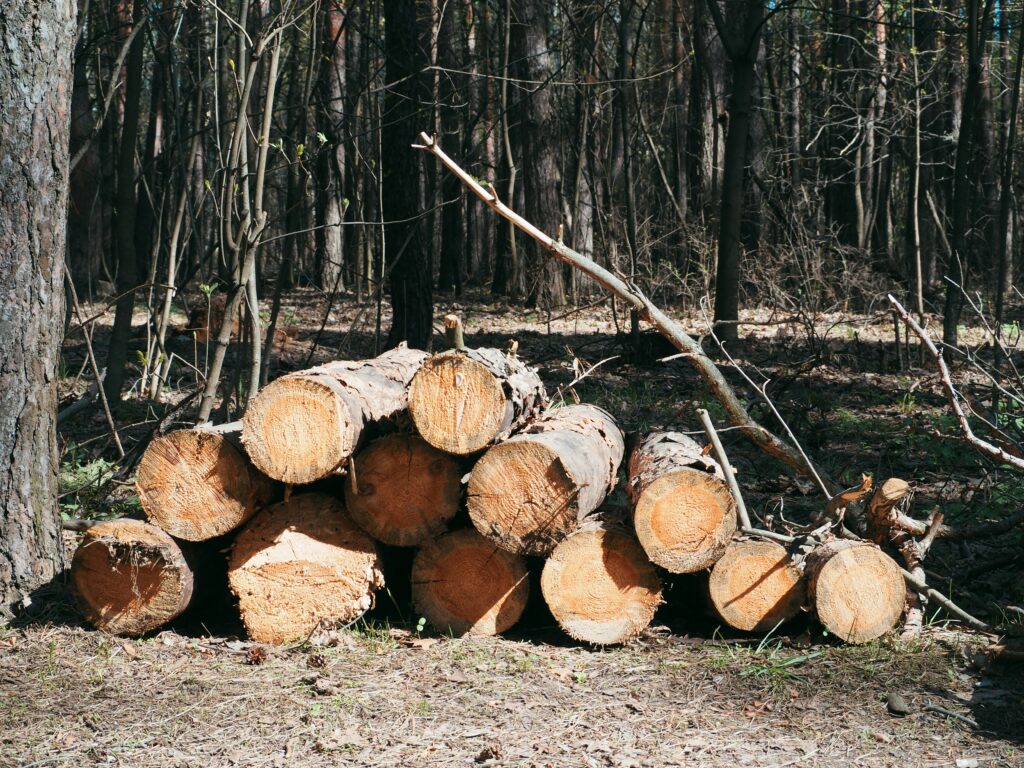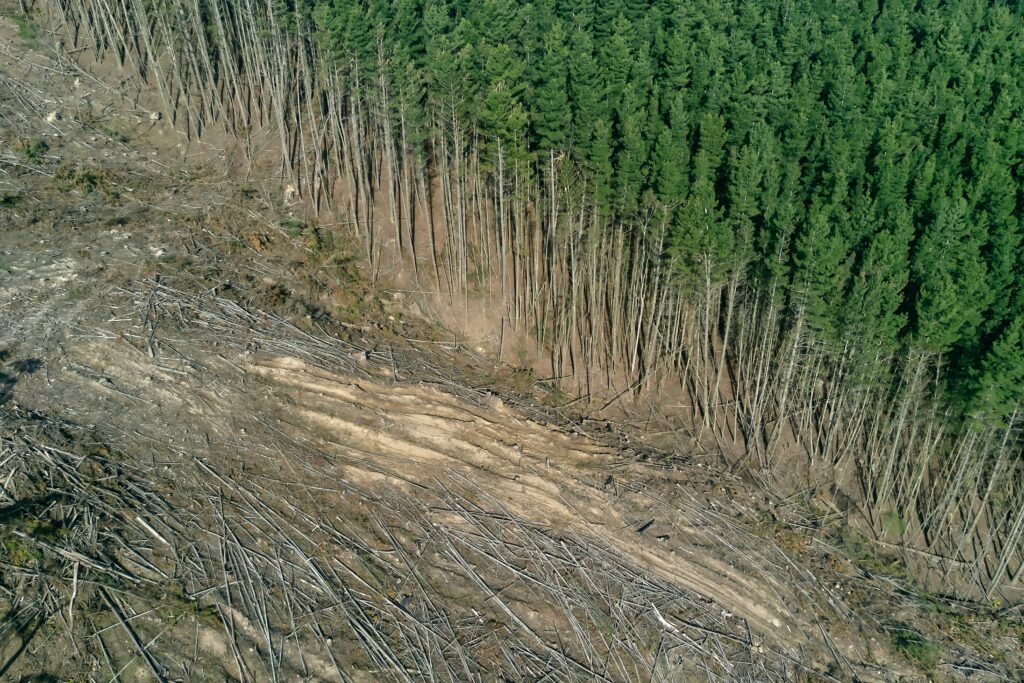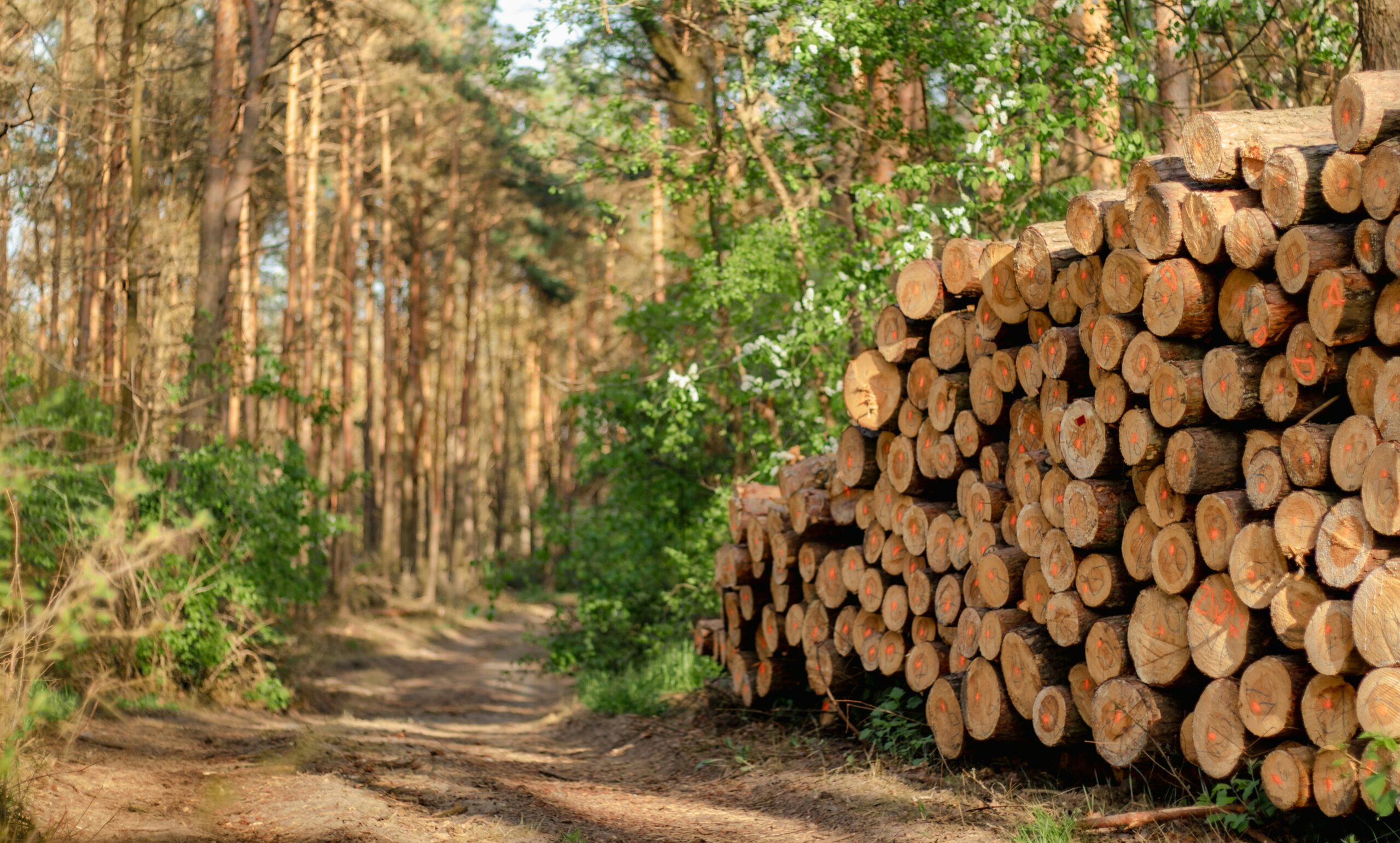We talk a lot about protecting forests, but not nearly enough about what actually happens when they’re gone. Deforestation isn’t just a matter of losing trees. It unravels entire ecosystems, shifts global climate patterns, affects how much food we can grow, and even helps spread disease.
In this article, I’ll walk you through the practical, science-backed impacts of deforestation based on the most up-to-date research and analysis. No panic – just a clear look at how clearing forests changes things, often in ways most people don’t realize.
Why Forest Loss Hits Harder Than It Sounds
Forests aren’t just collections of trees. They’re dynamic systems that balance water, regulate temperature, trap carbon, protect soil, and support the majority of the world’s land-based species. And that’s before we even talk about how many people rely on them to live.
So when forests disappear, it’s not just about tree stumps. It’s about losing a system that holds a lot of things together.
How Deforestation Affects the Environment
This is usually where the conversation starts, and for good reason. The environmental effects of deforestation are immediate, long-lasting, and often hard to reverse.
Losing Nature’s Best Carbon Tool
Forests are one of the most efficient natural carbon sinks we have. Trees absorb CO₂ through photosynthesis and store it in their roots, trunks, and leaves. When they’re cut down or burned, that carbon goes right back into the atmosphere.
- Deforestation is responsible for about 12 to 20 percent of global greenhouse gas emissions.
- Tropical rainforests, in particular, store massive amounts of carbon due to their dense biomass.
- When removed, not only do they release that stored carbon, but the ability to absorb future carbon is lost.
It’s a double hit: emissions go up, and our defenses against climate change get weaker.
Breaking the Water Cycle
Trees aren’t just pulling water from the soil. They’re also putting it back into the air. Through a process called transpiration, moisture is released from leaves, forming clouds and influencing rainfall.
When forests are cleared:
- Less water returns to the atmosphere.
- Rainfall patterns shift.
- Droughts become more frequent.
- Flooding becomes more likely in areas downstream.
The Amazon, for example, plays a major role in regulating rainfall across South America. When deforestation disrupts that cycle, it doesn’t just impact Brazil – it can shift rain patterns across the entire continent.
Soil Doesn’t Stand a Chance
Roots hold soil in place. Tree canopies reduce the impact of falling rain. And forest floor vegetation helps slow water runoff. All of this keeps the ground intact and fertile.
Remove the trees and you get:
- Soil erosion
- Landslides in hilly or mountainous regions
- Nutrient loss
- Reduced crop yields
Farmers in deforested areas often move from one patch of land to another because the soil stops producing. That leads to more clearing, continuing the cycle.

The Ripple Effect on Biodiversity
Roughly 80 percent of all land-based plant, animal, and insect species live in forests. So when forests shrink, so does the world’s biodiversity.
Wildlife Doesn’t Just “Move On”
Wildlife doesn’t just “move on” when forests are cleared. While it might seem like animals can simply relocate, the reality is that most species rely on very specific conditions to survive. They may need a particular type of tree, a certain elevation, or a narrow range of temperature and humidity. When those conditions vanish, so do their chances of survival.
Without their natural habitat, many animals face starvation or are exposed to new predators. Populations can become isolated, leading to inbreeding and a steep decline in genetic diversity. In some cases, species disappear before we’ve even had a chance to discover or study them.
This is already happening to animals like orangutans and tigers in Southeast Asia, gorillas in Central Africa, and jaguars in South America. Even pollinators like butterflies, birds, and bees are struggling, which poses an additional threat to agriculture. It’s not just about saving wildlife for its own sake. These species keep ecosystems functioning. When too many disappear, the balance starts to collapse.
What It Means for People on the Ground
The people who live in or near forests are usually the first to feel the effects of deforestation – and often the ones with the least power to stop it.
Indigenous Communities Under Pressure
Many Indigenous groups live sustainably in forest environments, relying on them for food, water, medicine, and cultural practices.
When forests are cleared:
- These communities lose their homes and resources
- They are often displaced or pushed to urban margins
- Their traditions and identities are put at risk
In some areas, governments or companies forcibly evict communities before large-scale logging or agricultural projects. This isn’t just an environmental issue – it’s also a human rights one.
Local Economies Feel the Fallout
Millions of people work in forest-based industries, from harvesting timber and medicinal plants to eco-tourism and sustainable agriculture. When those forests are gone, so are the jobs.
And it’s not just jobs in the forest itself:
- Less rain means smaller harvests
- Soil degradation means more fertilizer costs
- Water pollution raises health risks and treatment costs
Short-term profits from logging or large-scale farming often come at the cost of long-term stability for rural economies.
Public Health: The Hidden Cost
One of the lesser-known effects of deforestation is how it affects human health, especially through air quality, water pollution, and disease transmission. These consequences often go unnoticed at first, but they tend to escalate quickly once forest loss reaches a certain scale.
Breathing Becomes Harder
Burning forests – whether through slash-and-burn farming or wildfires – releases more than just carbon dioxide. The process sends smoke, ash, and fine particles into the air, creating toxic conditions that linger far beyond the burn site. Breathing this kind of polluted air can trigger asthma, cause lung infections, and lead to chronic respiratory issues over time. Children and older adults are particularly at risk. And the effects don’t stay local. Wind can carry that smoke hundreds or even thousands of miles, spreading the problem across regions and borders.
Water Gets Dirtier
Forests help keep water clean by slowing down runoff and allowing rain to seep gradually into the soil. Roots hold the earth together and act as a natural filter, preventing sediment and pollutants from rushing into rivers and lakes. But when trees are removed, that system breaks down. Eroded soil clogs waterways, while fertilizers, waste, and chemicals wash freely into the water supply. This puts pressure on both urban water systems and rural communities, where untreated water often leads to serious illness and long-term health risks.
Diseases Spread Faster
Deforestation also plays a role in how diseases reach people. As forests shrink, wild animals are pushed closer to human settlements. This increases the chances of zoonotic diseases – illnesses that jump from animals to humans. In many deforested regions, malaria cases rise because mosquito populations grow rapidly in disturbed landscapes. Some viruses, like Ebola and possibly COVID-19, have also been linked to disruptions in natural ecosystems. In addition to wildlife, pests like rats and mosquitoes thrive in these altered environments, making outbreaks more common and harder to control.

What Happens to Food and Farming
You’d think clearing forests would help farming, and in the short term, it often does. But over time, it creates more problems than it solves.
Crops Struggle in Degraded Soil
As mentioned earlier, deforestation strips the land of the nutrients it needs to stay productive. When trees are removed, the soil loses its structure and organic matter, making it harder to retain moisture and support healthy plant growth. Over time, yields begin to drop, and farmers often notice more pests invading their fields. To keep production up, they turn to chemical fertilizers, which adds cost and complexity to farming. Harvests become less predictable, and food becomes more expensive to grow and maintain. It’s a cycle that pushes farmers into greater dependency on external inputs while getting less back from the land itself.
Climate Uncertainty Makes It Worse
Forests help keep the climate in check by balancing temperature, moisture, and rainfall. When too many trees are cleared, those systems go out of sync. Suddenly, farmers are facing unpredictable conditions like dry spells that come out of nowhere or heavy rains that arrive at the worst possible time. The seasons become harder to read, and planting calendars lose their reliability. That unpredictability doesn’t just complicate daily work on the farm – it creates long-term risks for food production. In places already struggling with hunger or fragile agricultural systems, this added layer of uncertainty makes things even harder to manage.
Land Use Priorities Get Skewed
Often, forests are cleared for cash crops like:
- Soy
- Palm oil
- Rubber
These don’t feed local populations. Instead, they serve export markets, often leaving nearby communities with less land and fewer options for growing staple foods.
A Few Places Where the Damage Is Clear
The Amazon
Often called the “lungs of the Earth,” the Amazon is losing forest at alarming rates due to cattle ranching, soy farming, logging, and illegal land grabs. It’s already lost about 20 percent of its original area.
Southeast Asia
Palm oil production is the big driver here, especially in Indonesia and Malaysia. Logging and rubber plantations are also major contributors. Native species like orangutans are vanishing fast.
Southern United States
Logging for timber and paper products is still ongoing. Monoculture pine plantations are replacing diverse forests, reducing habitats and degrading soil and water.
So What Can Actually Be Done?
Deforestation might be widespread, but it’s not something we have to accept as a given. There are practical, proven ways to slow it down and, in some cases, reverse the damage. One of the most direct approaches is to support reforestation and afforestation efforts. Planting new trees in areas that have been cleared can help restore some of the environmental functions that were lost, like stabilizing soil, improving water cycles, and drawing carbon out of the atmosphere.
Another important step is rethinking how land is used in the first place. Promoting sustainable farming and forestry methods can reduce the pressure to clear new land. This means encouraging practices that preserve soil health, avoid overextraction, and make better use of existing agricultural areas instead of expanding into forested zones.
Laws matter too. Strengthening legal protections for forests and making sure those rules are actually enforced can help prevent illegal logging and land grabs. But legal frameworks alone aren’t enough. Indigenous communities who have lived in forests for generations often know best how to manage and protect them. Giving these communities real authority over their land isn’t just fair – it’s often one of the most effective conservation strategies we have.
Consumer behavior also plays a role. When companies know that buyers care about how products are sourced, they’re more likely to shift toward deforestation-free supply chains. That includes everything from the beef and soy used in processed foods to the palm oil in cosmetics or the paper in packaging.
This isn’t about some idealistic vision of the future. It’s about protecting systems that human life already depends on. Forests regulate climate, maintain clean water supplies, protect biodiversity, and support livelihoods. No technology can fully replace what they do.
That’s why efforts like the EU Deforestation Regulation (EUDR) are gaining momentum. The EUDR places legal responsibility on companies to prove their products aren’t linked to deforestation, setting a new global standard for accountability. It’s not just a policy – it’s a practical tool to help shift global supply chains toward sustainability. And in a world where time is running out, tools like that matter more than ever.

From Regulation to Reality: Monitoring in Action
If deforestation is allowed to go unchecked, we know what follows: rising emissions, disrupted rainfall, polluted water, disappearing wildlife, and stressed food systems. That’s why enforcing rules like the EUDR isn’t just a legal matter – it’s a critical step toward slowing the damage before it spreads. But enforcement only works when it’s backed by clear, timely data.
That’s where we come in. At Zgodność z EUDR, we’ve built a platform that makes forest monitoring smarter and more actionable. Using satellite-based tracking, we help businesses spot deforestation risks early in their supply chains, from cattle and soy to timber and palm oil. Instead of reacting after the damage is done, companies can stay ahead of it – reducing their impact and staying compliant at the same time. If we’re serious about addressing the effects of deforestation, we need more than awareness. We need tools that turn visibility into accountability.
Wnioski
Deforestation isn’t a headline issue that comes and goes. It’s something that’s reshaping the planet every day, quietly but powerfully. Whether we’re talking about climate shifts, water shortages, food supply issues, or public health risks, it often traces back to forests being cleared faster than they can recover.
But the solutions aren’t abstract. We already have tools, policies, and data to stop the damage before it spreads further. The challenge is getting those tools in the right hands and making sure accountability keeps pace with the speed of change. Forests aren’t a backdrop to environmental news. They’re part of the infrastructure that keeps everything else running. The more we recognize that, the better chance we have at keeping what still remains intact.
FAQ
What is deforestation, really?
Deforestation is more than just cutting down trees. It’s the clearing of large forested areas, often permanently, to make way for agriculture, infrastructure, or industry. But it doesn’t just affect what the land looks like. It disrupts ecosystems, contributes to climate change, and leaves long-term consequences that don’t always show up right away.
How does deforestation impact climate change?
Forests absorb carbon dioxide, which helps cool the planet. When they’re cleared, that carbon is released back into the atmosphere, adding fuel to global warming. At the same time, the planet loses one of its most efficient systems for keeping carbon levels in check. So it’s a double loss – more emissions, and fewer trees to absorb them.
Why is biodiversity loss such a big deal?
Because once species go extinct, they don’t come back. And in most forests, species rely on very specific conditions to survive. When the forest goes, their food, shelter, and survival networks go with it. Even the loss of seemingly small species – like pollinators or insects in the food chain – can have ripple effects all the way up to human food systems.


